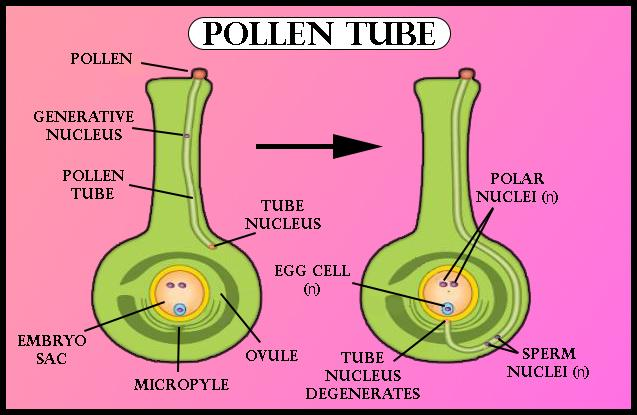
Answer
461.7k+ views
Hint: These flowerless plants produce cones and seeds. The seed of these types of plants is naked (whose ovule is not enclosed in the ovary of the flower). This is a vascular plant of the subkingdom Embyophyta and includes conifers, cycads, ginkgoes, and gnetophytes.
Complete answer:
Siphonogamy is exhibited by the gymnosperms. In siphonogamy, the pollen tubes are developed for the transfer of male cells to the eggs.
Additional Information: -The gymnosperms, also known as the Acrogymnospermae.
-The development of a vascular system capable of transporting water throughout the plant enabled the gymnosperm to colonize the land.
-The ovule is also known as the megasporangium.
-A pollen tube is a tubular structure produced by the male gametophyte of the seed plants when it germinates.
-The growth of the pollen tube is stimulated by a sugary substance produced in the stigma of the flower.
-The length of the pollen tube depends upon the length of the styles.
-The pollen tube germinates after pollination from the intine layer of the pollen grain.
-When the pollen tube pierces through the integument of the ovule, such a process is called mesogamy.
-When the pollen tube enters the embryo sac through the base (chalaza) of the ovule, such a process is called chalazogamy.

So, the correct answer is, ‘Gymnosperms.’
Note: Gymnosperms are abundant in the temperate and boreal forest biomes with species that can tolerate moist or dry conditions. Gymnosperms are the first seed plants to have evolved. Gymnosperm seeds develop either on the surface of scales or leaves, which are often modified to form cones or exist alone as in yew, Torreya, Ginkgo.
Complete answer:
Siphonogamy is exhibited by the gymnosperms. In siphonogamy, the pollen tubes are developed for the transfer of male cells to the eggs.
Additional Information: -The gymnosperms, also known as the Acrogymnospermae.
-The development of a vascular system capable of transporting water throughout the plant enabled the gymnosperm to colonize the land.
-The ovule is also known as the megasporangium.
-A pollen tube is a tubular structure produced by the male gametophyte of the seed plants when it germinates.
-The growth of the pollen tube is stimulated by a sugary substance produced in the stigma of the flower.
-The length of the pollen tube depends upon the length of the styles.
-The pollen tube germinates after pollination from the intine layer of the pollen grain.
-When the pollen tube pierces through the integument of the ovule, such a process is called mesogamy.
-When the pollen tube enters the embryo sac through the base (chalaza) of the ovule, such a process is called chalazogamy.

So, the correct answer is, ‘Gymnosperms.’
Note: Gymnosperms are abundant in the temperate and boreal forest biomes with species that can tolerate moist or dry conditions. Gymnosperms are the first seed plants to have evolved. Gymnosperm seeds develop either on the surface of scales or leaves, which are often modified to form cones or exist alone as in yew, Torreya, Ginkgo.
Recently Updated Pages
Identify the feminine gender noun from the given sentence class 10 english CBSE

Your club organized a blood donation camp in your city class 10 english CBSE

Choose the correct meaning of the idiomphrase from class 10 english CBSE

Identify the neuter gender noun from the given sentence class 10 english CBSE

Choose the word which best expresses the meaning of class 10 english CBSE

Choose the word which is closest to the opposite in class 10 english CBSE

Trending doubts
How do you graph the function fx 4x class 9 maths CBSE

Fill the blanks with the suitable prepositions 1 The class 9 english CBSE

Which are the Top 10 Largest Countries of the World?

A rainbow has circular shape because A The earth is class 11 physics CBSE

Change the following sentences into negative and interrogative class 10 english CBSE

The Equation xxx + 2 is Satisfied when x is Equal to Class 10 Maths

Give 10 examples for herbs , shrubs , climbers , creepers

Difference between Prokaryotic cell and Eukaryotic class 11 biology CBSE

One Metric ton is equal to kg A 10000 B 1000 C 100 class 11 physics CBSE




